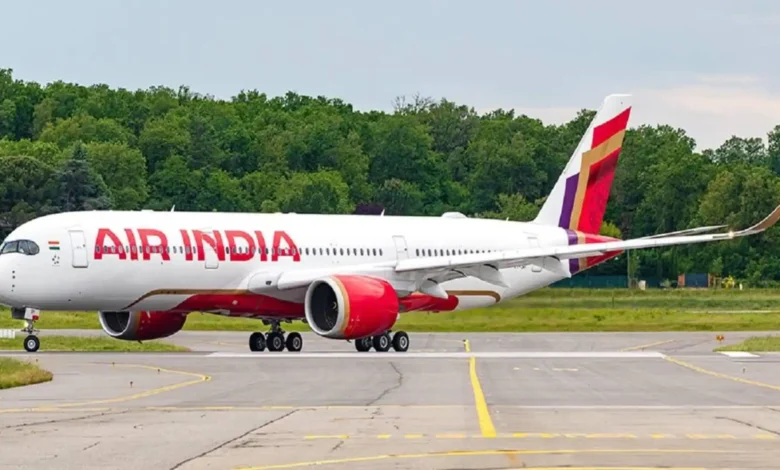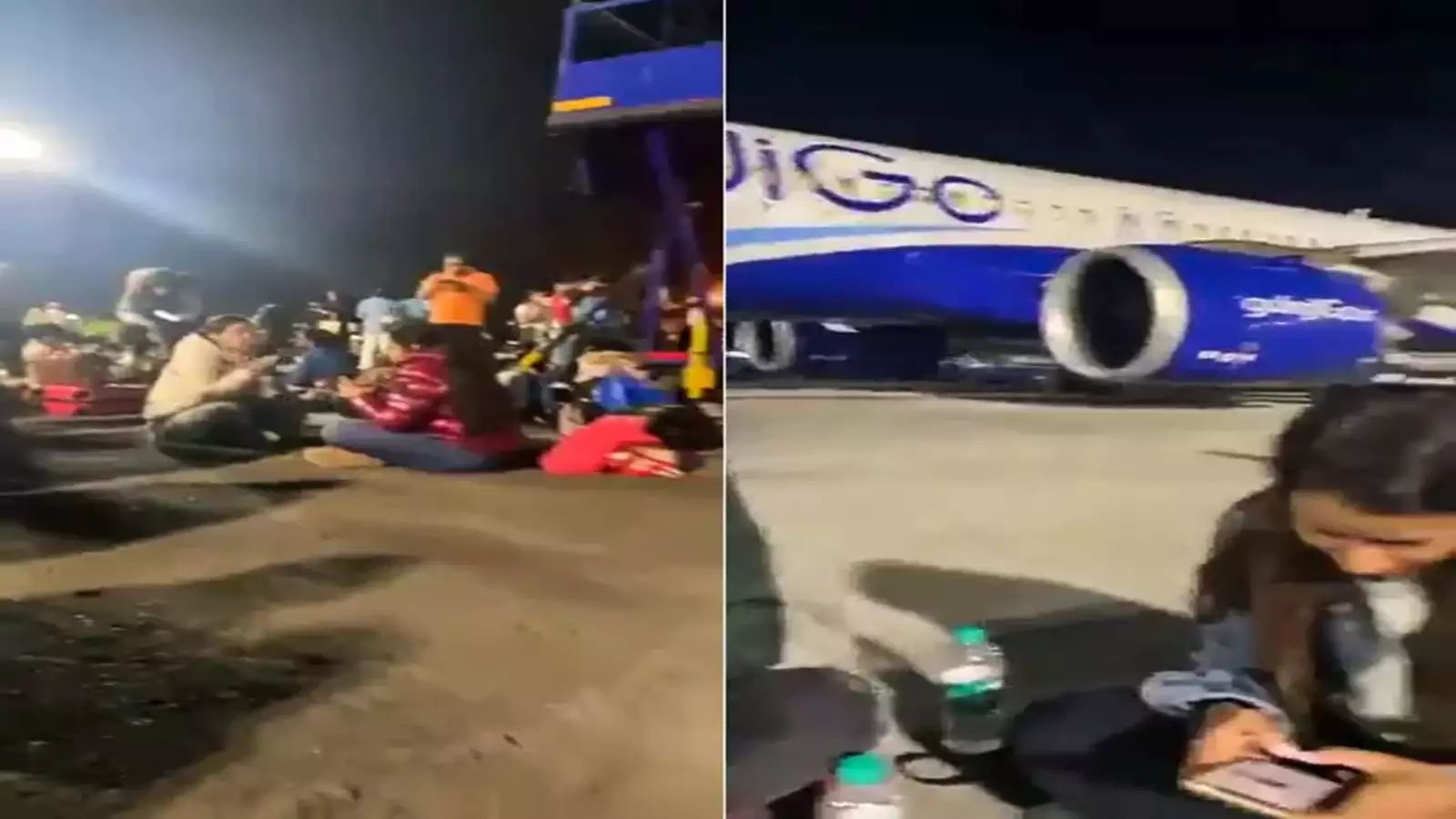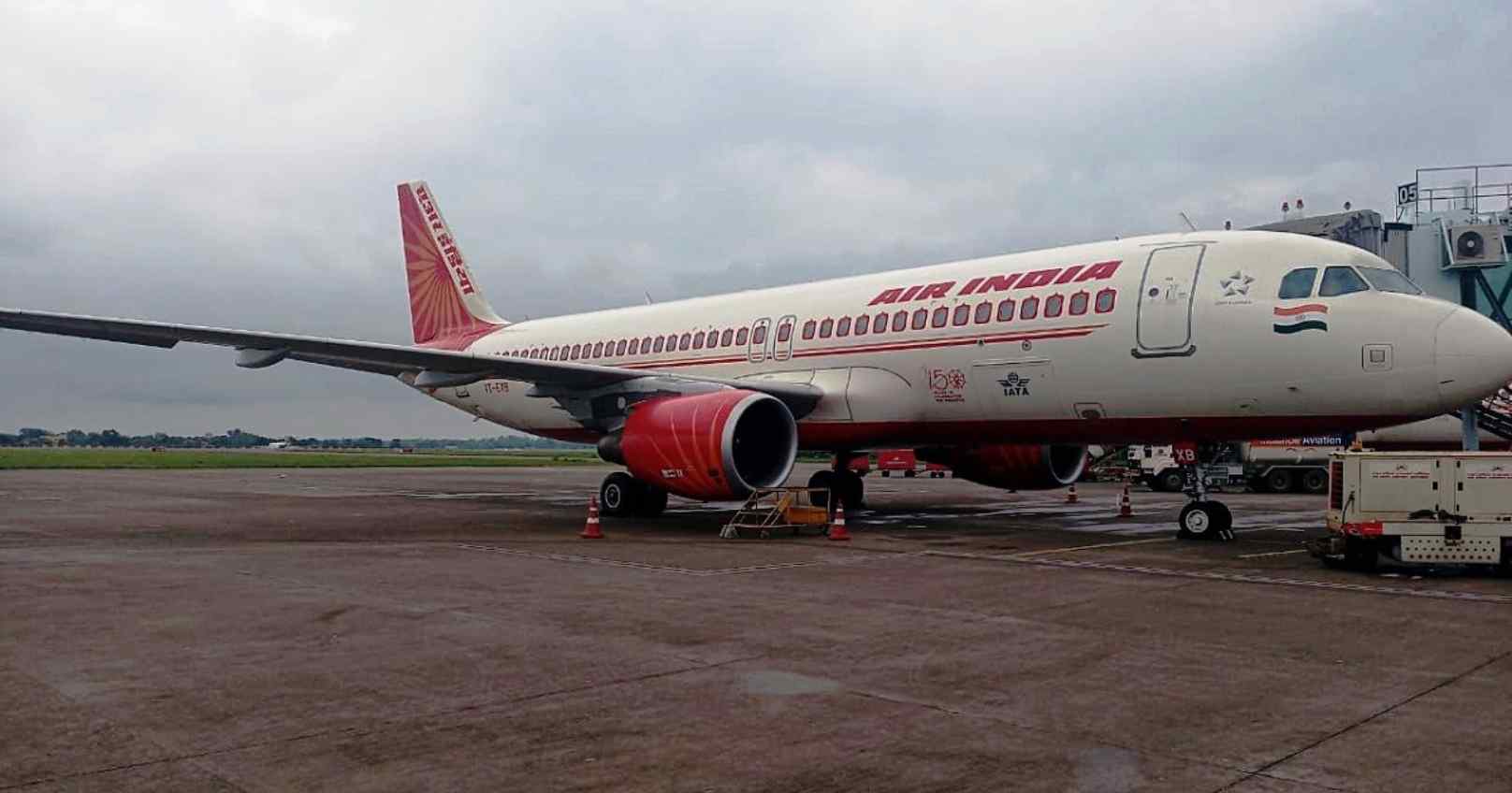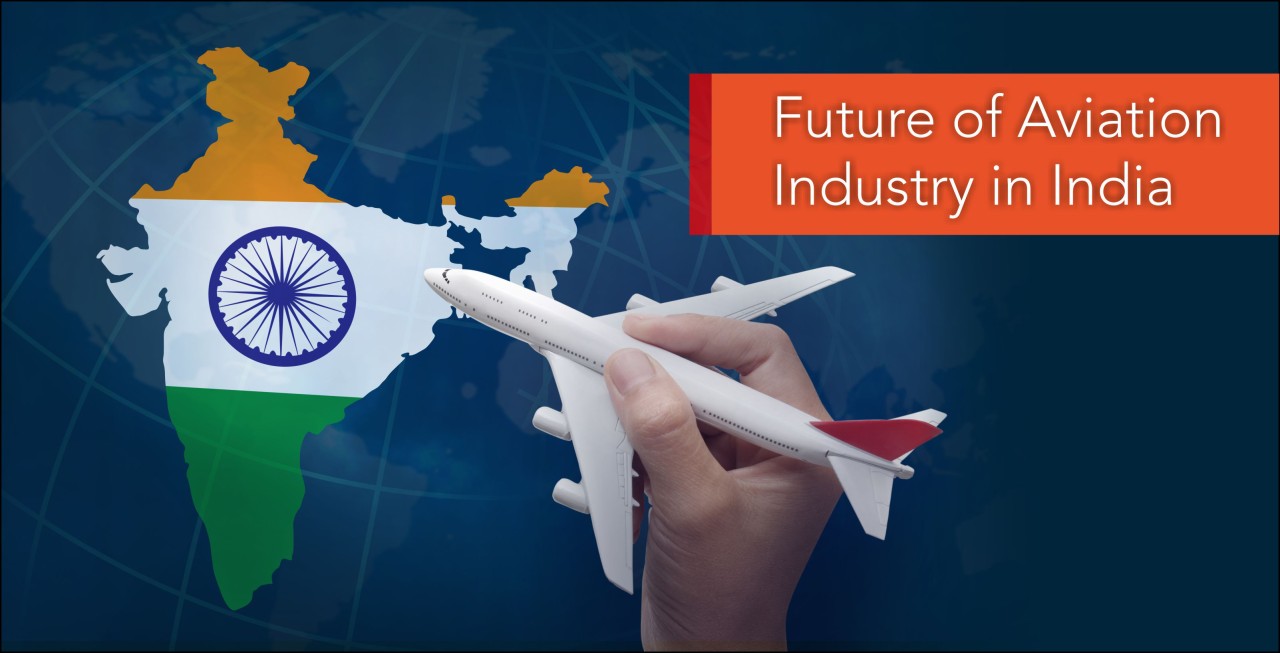Air India Paris-Jaipur Flight Diversion: What Does This Say About India’s Aviation Standards And Global Credibility?
On November 18, 2024, an Air India flight (AI-2022) travelling from Paris to New Delhi was diverted to Jaipur due to heavy smog in the national capital. This diversion caused grave delays and the discomfiture of more than 180 passengers, who, finally, were routed to Delhi by bus after the pilots refused to resume the flight, stating that their hours of duty were over. Grave questions are raised about operational protocols, regulatory compliance, and customer service within Indian aviation.

On November 18, 2024, passengers on board Air India flight AI 2022, which was flying from Paris to New Delhi, faced an experience that again underscores the massive loopholes in India’s aviation sector. Scheduled to arrive at 10:35 AM, the flight had to be diverted to Jaipur as heavy smog and low visibility conditions had prevailed in the capital. This diversion led to a chain of operational lapses, ultimately stranding passengers for hours and then making them travel to Delhi by bus.
The event’s immediate cause-poor visibility-was unavoidable for human control, but the way Air India handled, or more accurately, mishandled it, exposed the problems inherent in their system, ranging from inadequate planning to defective communication and a complete lack of customer-centric policies.
Sequence of Events: A Journey to Hell in Indian Skies
Takeoff and Landing Time:
AI-2022 took off from Charles de Gaulle Airport in Paris at 10 PM on Sunday, 17 November 2024. It was expected to arrive the following morning at Indira Gandhi International Airport (IGIA) in New Delhi at 10:35 AM.
Diversions to Jaipur:
Just as the flight was nearing Delhi, poor visibility due to thick layers of smog-always a perennial problem in the region during winter-was affecting the pilots’ visibility. As the pilots were not trained on low-visibility landings (Category III Instrument Landing System or CAT III ILS), the flight had to be diverted to Jaipur, about 280 km away from Delhi.
Wait Continues at Jaipur Airport:
The flight crews informed the passengers that they would proceed to Delhi once they had the necessary clearances. Time passed but nothing happened. Matters deteriorated when the pilots decided not to continue their journey further. They added that they had already exceeded the stipulated FDTL hours.
Passenger Struggles and Social Media Outcry:
Passengers, including families with babies and older people, found themselves stranded in a sea of information deprivation. Their chosen medium of venting negative emotions became social media, with posts recounting examples of lacking basic provisions and poor communication along with lack of alternative arrangements.
The Final Solution:
It then was decided by Air India to transport the passengers on buses to Delhi almost nine hours after this uncertainty. This was the fastest possible method of evacuation available. However, that only triggered anger: it did not address the comfort or dignity of passengers, especially of those with special needs.
Identifying the Fundamental Issues
It is not infrequent that a flight is diverted due to bad weather. What is peculiar about this incident is the inefficiency of Air India in managing the situation once the flight was diverted.
It is a basic norm that an airline should keep some standby crew or alternative plans in place when diverting to airports. In this episode, it was communicated that Air India was not ready to manage the situation in Jaipur, which is a leading airport.
A lack of trained pilots to handle low-visibility landings reflects a larger issue about resource allocation. It doesn’t explain whether Air India is prioritizing cost savings over operational readiness.
There was nothing sensational about the refusal by the pilots not to continue the flight; it was an act of compliance with the regulations of the DGCA.
Flight Duty Time Limitation (FDTL): FDTL rules mandate that pilots adhere to strict limits on flying hours to prevent fatigue, a major safety risk. However, Air India’s inability to arrange a fresh crew at Jaipur points to a failure in crew management. By and large, this has been the trend in the industry reports regarding the shortage of pilots for the airlines in India. This creates pressure on the available crew and makes them work overtime.
The systemic problem is not unique to Air India but wide-spread within the Indian aviation sector. The most glaringly obvious problems in this case have been a failure in effective and sympathetic communication among passengers.
Passengers complained that the flight kept them in the dark for hours without any updates whatsoever, which added to anxiety and frustration. Communication should be prompt during such situations to control expectations and reduce tension.
The staff of Air India at Jaipur airport were leaving passengers to fend for themselves, making no show of effort to assuage the anxiety or distress of passengers. The DGCA has framed guidelines that ensure passenger safety and rights. The problem lies in the rather inconsistent application and enforcement of these regulations.
Incidents like the one involving AI-2022 point to a failure of proactive oversight by regulatory agencies in ensuring that airlines are geared up to respond to events. Individually and collectively, airlines suffer minimal penalties for these lapses, which does little to encourage better management practices.
A Broader Perspective: Systemic Issues in Indian Aviation
The AI-2022 incident was far from an isolated case but a feature of the general operational inefficiencies and poor customer service facilitated by Indian aviation.
Past Incidents of Airline Failures: A Grim Reality of Indian Aviation
Air India flight AI-2022 diversion is not an isolated case but a worrisome trend in Indian aviation. The repeated instances of mismanagement, technical failures, violations of the regulatory framework, and lousy customer service have really given a black mark to the industry. These failures, in addition to amounting to systemic inefficiencies, also mean unwarranted hardship to passengers left stranded, frustrated, and helpless. Below, we explore some of the most significant past incidents that mirror the current issues and underscore the urgent need for reform.
- Incident: Overnight Stranding by IndiGo, 2023

In February 2023, passengers travelling on an IndiGo flight from Bengaluru to Delhi were left stranded overnight at the airport because the flight was not scheduled until the following morning due to technological breakdowns. Initially, the company assured that the aircraft would take off a few hours later but failed to update passengers as the hours passed into the early hours of the night.
Passengers complained of mixed information from the ground. Some were told that an alternative aircraft would be arranged, while others were advised to cancel their tickets and book their later flights.
Families with children and old people complained about not getting access to basic provisions like food, water, and blankets during this wait. The airline did not arrange any accommodation or transportation for the passengers; they relied on their self-help.
Many passengers missed crucial appointments and connecting flights. Although the airline apologized, no compensation or meaningful redressal was offered, earning widespread criticism for IndiGo’s customer service practices.
- Go First Bankruptcy Chaos (2023)
The sudden collapse of the finances of Go First, formerly known as GoAir, shocked the aviation world in May 2023, stranding thousands of passengers both in India and abroad. Such was the financial and operational instability of this airline that the airline abruptly called off all scheduled flights, much to the shock of passengers left stranded at various airports with no prior alternative arrangements.
Many international travellers find themselves alien to their foreign countries without any help.
Passengers who had booked tickets months in advance were struggling to get refunds, and complaints flooded social media as customers accused the airline of delaying the refund process and failing to offer rebooking on other airlines.
Questions arose about the regulatory oversight of financially troubled airlines. Critics said that the Directorate General of Civil Aviation (DGCA) and the Ministry of Civil Aviation had failed to intervene with proactive measures in time to avert its collapse.
- Air India Stranding in Phuket (2024)
In one other Air India incident, more than 100 passengers were left stranded in Phuket, Thailand, for days when the return flight to Delhi was grounded due to technical reasons.
Passengers state they were left in the dark regarding the flight status. Many have gone through hours at the airport before being informed that it will take several days for repairs.
Where airlines in other developed countries arrange alternate flights through partner airlines, Air India did not. Passengers were left to fend for themselves by booking alternate tickets on other airlines at exorbitant last-minute prices.
Several tourists with sparse budgets depleted all their savings during the prolonged layover. Other travellers were compelled to spend their nights at the airport since the airline did not offer any hospitality facilities due to a lack of accommodation arrangements.
- Technical Issues of SpiceJet: Emergency Landing (2022)
SpiceJet has also been associated with a series of operational inefficiencies. Between June and July 2022, the company revealed multiple technical snafus leading to emergency landings.
For example, a SpiceJet plane going from Delhi to Dubai made an unplanned landing in Karachi when a fuel indicator had become inoperative. In another instance, a Patna-Delhi flight was compelled to return to the airport shortly after takeoff because one of its engines had malfunctioned.
The DGCA issued warnings to SpiceJet, citing concerns over maintenance and safety protocols. The regulator temporarily capped the airline’s flight capacity to prevent further incidents.
They exposed serious lapses in maintenance practices that threatened the safety of passengers. Questions were raised over the commitment of the airline to the path of safety, and a major blow was dealt to public confidence in SpiceJet.
- Jet Airways Closes Down (2019)
It was one of the darkest chapters of Indian aviation-in the year 2019, Jet Airways broke into pieces. The once-largest private airline in India shut its operations due to debts piling up and poor financial management. The airline had suspended all its domestic and international flights, leaving thousands of passengers overnight stranded at airports. Confused and angry travellers swamped airports across the country.
The shutdown left more than 20,000 employees out of work, and it threw the plans of millions of passengers in disarray-many of whom had booked tickets months in advance-only to have their flights cancelled without recourse.
This collapse by Jet Airways exposed systemic weaknesses in the financial health of Indian airlines. The incident prompted calls for stricter financial oversight and more robust bailout mechanisms to protect both employees and passengers.
Recurring Themes and Human Impact of Airline Failures
An incident like Air India flight AI-2022 diversion raises an important issue in the aviation industry: it has systemic problems in making contingency plans whereby passengers are left stranded with no clear alternative, coupled by the frustration that poor communication breeds, since airlines do not give timely updates or transparent explanations. Minimal compliance with passenger rights further aggravates the problem because basic entitlements like food, accommodation, and transport are frequently neglected.
The human cost of these failures is profound. Families who are travelling with infants or elderly relatives are placed under greater pressure in such events of disruption. In one particular incident, a passenger narrated how his wife and two-month-old child were subjected to several hours of discomfort, with the airline making no appropriate arrangements for them. Business travellers are another group very much victimized because delays most of the time will mean the loss of meetings, finances, and irreparable professional setbacks.
The psychological impact also is equally important. For passengers—though more so for international passengers who lack familiarity with local systems—the frustration of being left stranded, lacking clear guidance or reassurance, builds enormous stress and anxiety. These events have nothing to do with operational failures but tear apart the very fabric of lives, decimate the trust placed in airlines, and merely bare systemic failures that need comprehensive reforms.
Impact on Global India’s Reputation
Aviation represents the underpinning of any country’s international image, and then, above all, is the epitome of its own productivity, efficiency, reliability, and quality. There is huge damage when, as happened with Air India flight AI-2022, it is diverted off course, with vast consequences.
Indian airlines appear unreliable with frequent disruptions, weak contingency planning, and a lack of viable customer service. International travellers who are used to high standards of services may avoid Indian carriers altogether and instead prefer airlines with good safety records and care for passengers. Perception of the airline takes a long time to recover once it is lost.
The aviation sector is a significant feeder of tourism and business travel both of which contribute significantly to the Indian economy. Negative experiences shared by the international passengers worldwide may discourage future visitors. Decline in tourism and business-related travel could have cascading effects on industries such as hospitality, retail, and trade which will impact the economic growth of India.
Thus, in today’s inter-linked world, the efficiency of a country’s aviation industry automatically lies in the good light of its overall infrastructure and governance. Therefore, when there are delays, mismanagement, and lack of transparency associated with Indian airlines, it does not merely cast aspersions on the former but also questions the capability of the former to manage large-scale industries effectively, which hurts India’s position in the global market and hampers its aspiration to be one of the major economic and logistical hubs.
To compete internationally, India needs its aviation sector to emphasize operational excellence, passenger satisfaction, and global standards, making such events as AI-2022 the exception rather than a recurring problem.
Aviation Failures Consequences on India’s Global Image

That gateway for any country speaks of efficiency, reliability, and the high technology that portrays aviation, such as demonstrated in India. For instance, repeated instances of mismanagement, such as that of the diversion of Air India flight AI-2022, bring a poor count to the books of operating a dependable and passenger-centric aviation sector in India.
Such incidents add not only to the tainted image of Indian airlines but also throw a veil over the governance and infrastructure of the country. In a world where nations fight to get tourists, investors, and international attention, such incidents raise very piercing questions about the preparedness of India in matching international standards.
Trust is the backbone of the aviation industry, and in cases like AI-2022, it is eroded. The avalanches of operational failures, inability to plan even contemplated contingencies, and an apparent lack of customer focus created the impression that Indian airlines are not very trustworthy. International travellers who are accustomed to higher standards of service and efficiency may steer clear of Indian carriers. This mistrust is amplified as such incidents travel fast globally, and the complaining passenger has social media and news channels to flaunt and perpetuate the bad image.
Economic ramifications of poor aviation management are indeed wide-ranging. India’s successful tourist industry suffers when travellers perceive Indian airlines as incompetent or unsafe. Business travel also is affected when international professionals and investors seek other routes to avoid such disruptions.
Each of these maladies hurts ancillary industries like hospitality, retail, and logistics as well, making India a less attractive economic power centre. Finally, global businesses may reconsider locating operations in India if these poor aviation services suggest deeper systemic inefficiencies.
India’s Global Competitiveness Aviation is yet another critical marker of the overall governance of a country in the global arena. Here, operational lapses, loss of regulations, and lousy customer service are all signs of the weak governance of large-scale industries in India.
For an aspiring major economic power, these same incidents keep taking away the respective country’s credibility. Global competitors from places like Singapore, the UAE, and even smaller countries with such a well-developed aviation sector seize these shortfalls to win tourist traffic and business interests. If India cannot compete at that level of operational sophistication, it may lose out.
Events such as AI-2022 are not isolated but part of an ominous trend. These include the collapse of Jet Airways, bankruptcy of Go First, and common technical failures in SpiceJet, among others. This is a systemic crisis within the industry.
The lack of oversight, failure of passenger rights enforcement, and insufficient investments in human resource development and infrastructure do not help. These failures not only harm the passengers but also that this paints a picture of chaos and incompetence which undermines India’s aspirations to be a global leader in aviation.
It’s not a choice but an imperative-India needs to strengthen its regional and national airline structures with regulatory reform, operational efficiency, and high customer satisfaction. Unchecked, this will discourage not only the foreign traveller but also undermine India’s ambitious foray into the international marketplace. An accident like AI-2022 ought to wake up the sensitivities of the aviation industry as well as policymakers.
Call for Accountability

Therefore, the diversion of Air India flight AI-2022 serves as a symbol of problems that prevail in the airline scenario in India. It throws light on the imperative necessity of systemic changes so that operational failure would not be converted into passenger pain.
Aviation is, at its core, connecting people with people, places, and destinations. The failure of this trust, as evidenced in the tragedy of AI-2022 passengers, harms the entire system- airlines and regulators alike. By way of improvement, India should be a global leader in aviation; for that, it would need to change base-line priorities from cost-cutting to customer-centricity and from reactive management to proactive planning.
Change has to happen now. If stakeholders don’t wake up, AI-2022 will be repeated, and such incidents will occupy headlines while passenger trust bleeds away and India loses its reputation in the skies.




